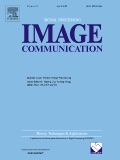Signal Processing: Image Communication
Special Issue on Computational Image Editing
Call for papers
In the past decade, smartphones and social media applications have revolutionized our relationship to images. From Instagram to Facebook, photographs are now ubiquitous and users demands have moved from simple image storage, posting and tagging to more advanced image editing. Image editing can also be referred to image manipulation and encompasses the processes of altering images to modify their visual content or quality. There are a lot of possible ways to visually modify images with computational techniques, e.g., noise reduction, removal of unwanted objects, sharpening, compositing, matting, to quote a few
Some of these computational image editing techniques are now in the hands of consumers with applications such as Instagram or Snapseed. But while smartphones are a very visible driver of this advent of computational image editing techniques, this has been possible only with the huge developments of the techniques that have supported this revolution, from the display of high dynamic range images to the wide range of filters provided by Instagram
Even with these recent advances, computational image editing is still one of the toughest problems of the imaging industry. Hence, professional photography editing is a long and laborious process that is highly dependent of the professional photographer skills that can spends hours to produce subjective and qualitative enhancements. It is easy to understand that if it normally takes many hours to perform a professional editing of a picture, doing it faster and automatically at a larger scale is difficult and challenging. On the other hand, recent advances have put to the forefront deep learning based computational image editing for artistic style transfer, automatic colorization, and inpainting with very impressive results. With the help of hardware acceleration, these computationally intensive applications begin to be feasible on mobile devices.
The aim of the proposed special issue is to present some of the cutting-edge works currently being done on computational image editing and to reveal the challenges that still lie ahead.

Topics
We are soliciting original contributions that address a wide range of theoretical and practical issues including, but not limited to:
- Tone-Mapping,
- Color constancy
- Color correction,
- Edge-aware filtering,
- Inpainting,
- Matting,
- Dehazing,
- Compositing,
- Seam carving
- Colorization
- Ink painting
- Style/color transfer

Submissions
Manuscripts should conform to the standard guidelines of the journal "Signal Processing: Image Communication". Details on the journal can be found here.
Prospective authors should submit an electronic copy of their manuscript through the online submission system at https://www.evise.com/profile/#/IMAGE/login with VSI:CIE as the article type.
For guidelines and information on paper submissions, visit https://www.elsevier.com/journals/signal-processing-image-communication/0923-5965/guide-for-authors.
Manuscripts should be marked with the proper special issue option in the Article Type section and the special issue should be mentioned in the cover letter. Each manuscript will be reviewed by at least two independent reviewers.

Important Dates
Original submissions due: January 15, 2020 January 31, 2020
First round of review completed, and decision sent to author: April 15, 2020
Revised manuscripts due: May 15, 2020
Final acceptance decision: July 15, 2020

Download a pdf version of the call for papers: 
Download a text version of the call for papers: 
Download a pdf version of the call for papers flyer: 
See the call for paper on the journal homepage here.
